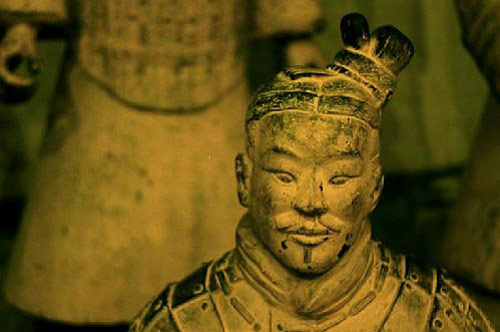
Buried with a whole empire
It is more than a tomb.
Buried in it is not only an emperor, but his whole empire.
It took 720,000 men and 38 years to build.
All the laborers were buried alive, leaving it a mystery for over 2,000 years.
Guarding this empire is a huge army, numbering in the thousands.
It is not a real army, but mirrors the emperors’ military power in his lifetime.
Not only did it secure a world empire for the emperor, it also undertook the mission of protecting him in his afterlife.



It finally came to light in our time, amazing the whole world.
In the spring of 1974, while doffing wells in Xiyang Village, Lintong County of Shaanxi province, some peasants unearthed a broken terracotta warrior. Unaware of what it was at first, they called it a god or a ghost. One peasant even took it as a scarecrow. Archaeologists were shocked by the discovery. They hadn’t ever anticipated that they would be part of one of the world’s most major archaeological discoveries of 20th century.
Over 8,000 life-size terracotta warriors and horses were excavated in an area of 20,000 sq meters. The warriors are 1.8 meters high on average- the tallest of their kind in the world. The horses, 1.7m high and 2m long in average, numbered in the hundreds.
Clad in military uniforms, the warriors stand in martial array, exuding loyalty and dignity. Each is unique in their looks and facial expressions, and has a well-craft hairstyle. A Chinese onlooker observing closely may find many of the soldiers look like one of his or her relatives, friends, colleagues, or even a passer-by.
The terracotta warriors and horses were the army of Emperor Qin shihuang, who not only unified the county, but also unified Chinese characters, currency, and measurement units for the first time in history.
Before the 3rd century BC, China was split into several independent and warring states. Emperor Qin Shihuang defeated all his rival states and established the first unified empire in the history of China—the Qin Dynasty (211-206 BC), an autocratic and centralized feudal empire.